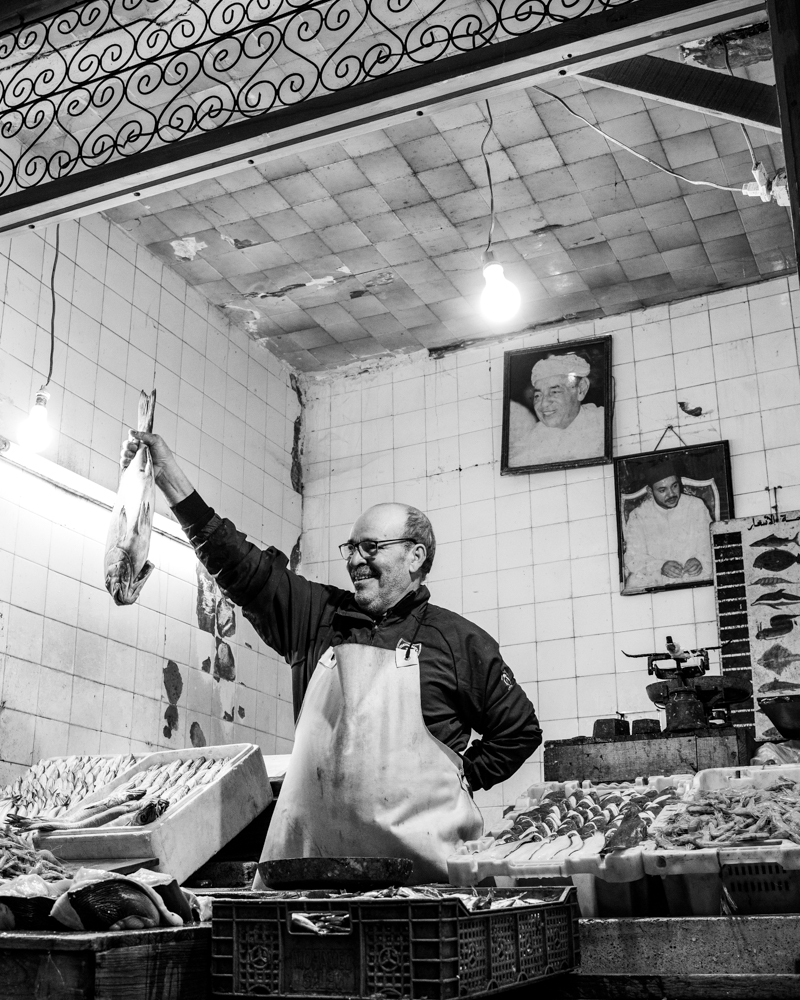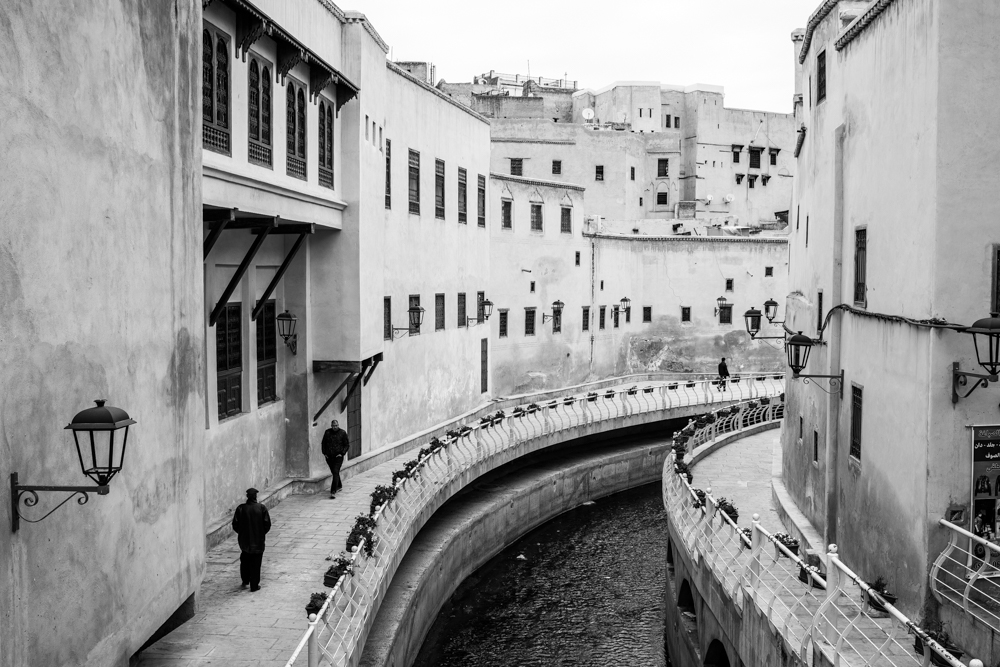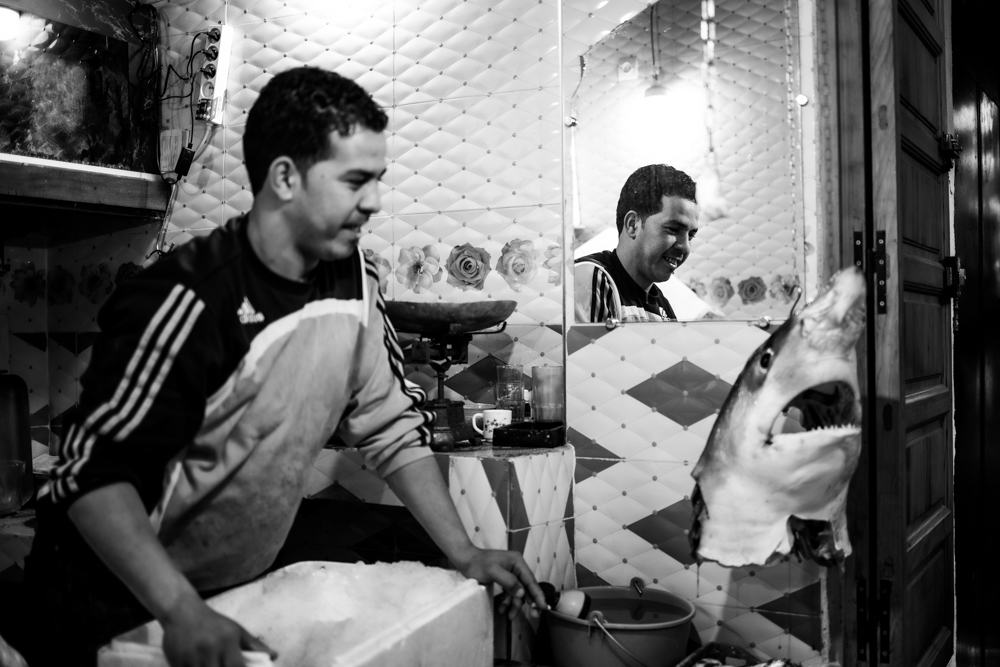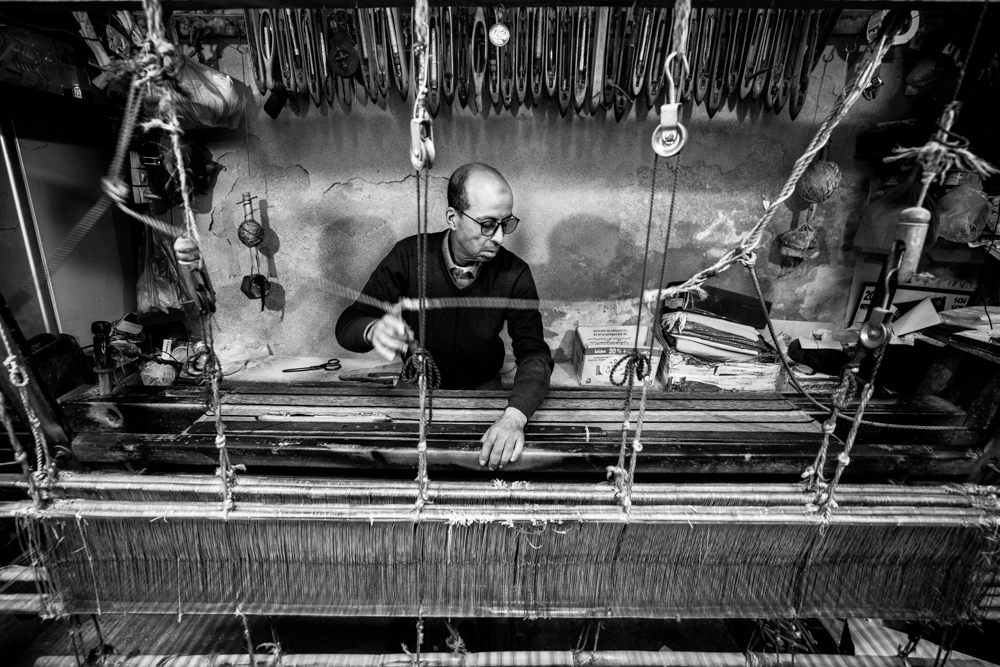While in Morocco, I was with my group at the Volubilis Ruins. It was a bit of a blue bird day, and the harsh light was kind of bumming our photography mood.
One of the participants in my workshop there said something along the lines, “this is definitely a black and white photography type of day”.
I agreed.
But, I’m terrible at black and white photography. For me, it’s always been a thing where I only really end up with photos I love in black and white when I flip the image in post-processing. I rarely go in making a photo thinking that it’ll be monochrome. Black and white photography is about seeing the tones in the world, and I like to say that I’m tone blind.
Then, Joe Allam popped into the conversation saying that he loved how he can flip his Fujifilm camera into black and white and see the world in black and white through the viewfinder.
For me, that was an absolute light bulb moment.
“Of course you can!”

Immediately, I went into the settings of the Canon EOS R I was shooting on and changed the picture style to monochrome. I think most of the others in our group did the same thing. It totally changed the mood. We went from being kind of apathetic to photographing the ruins, to perfectly absorbed by it.
It was the type of organic collaboration that I absolutely love. It’s one of the best reasons for doing photography with others. You don’t always learn new things, but sometimes you get these light bulb moments.
So, for the rest of today’s blog post, I want to share with you some of my favourite images from the following 24 hours where I shot everything on my mirrorless camera in black and white.
Setting Your Mirrorless Camera for B&W Photography
Pictures Style
If you’re curious how to do this, it’s pretty simple and can be done on any mirrorless camera that I know.
Somewhere in your camera menus you’ll have an option for something like “picture style” as it is on Canon cameras. There, you’ll be able to choose the style of photo. I usually have mine set to “landscape” as I’m most often photographing nature. However, you can set it to portrait, flat, or whatever custom setting you prefer.
I should mention, too, that by changing the picture style, it doesn’t affect your actual photo at all as long as you’re making photos in RAW format. Essentially, all the picture style is going to affect is the jpeg preview your camera produces on the LCD and what you see through the electronic viewfinder.
Shoot RAW
Now, unless you want the settings baked onto the photo permanently, you need to photograph in RAW. If you shoot RAW, you’ll be able to backtrack later. For example, if you’re taking pictures all day with a black and white viewfinder, you’ll still have the ability to revert the image back to colour.
If you take your pictures in JPEG with the picture style set to monochome, you’ll end up with black and white photos whether you like it or not.

Can You Do This on a DSLR?
The obvious answer is, no. But, that’s not entirely fair.
Sure, on DSLRs you don’t have an electronic viewfinder. You’re looking through an optical viewfinder which means that you’re looking through the lens at the world as it actually is. On a mirrorless camera, you’ll looking at a tiny LCD screen.
There’s good news, though. If you’re taking pictures on live view, or on the LCD you’ll still be able to take your pictures this way. Of course, you can always shoot with a monochrome picture style, and use the optical viewfinder. That would result in black and white photos on your LCD, which you could preview that way.

Thoughts on Shooting B&W
For me, it’s like taking pictures backwards
I think the hardest thing about photographing black and white images for me is that it goes against my landscape photography train of thought. In landscapes, you’re almost always trying to increase the dynamic range. But if you do that with black and white photography you end up with flat-looking grey images.
With black and white photography, you really need to search out the contrasts, shadows, and highlights and use them to your advantage.

Shadows and harsh light are your friends
When you’re shooting colour, it’s usually the case that you’re trying to hit the exposure meter somewhere close to the middle. You kind of want a properly exposed image throughout the photo. However, in black and white, it’s important to know how to use the highlights and shadows to your advantage. It’s equally as important to understand that the exposure doesn’t need to be “right”, it needs to be right for that photo.
What might look 2 stops over-exposed in colour can often look really interesting in black and white. It goes the same way for underexposed images.
Use shadows as your frames
The background of photos, especially in street photography, is almost as important as the subject itself. In black and white photography I found that even more the case. If the background has the same tone as the subject, it can really lead to the subject not standing out at all.
In black and white photography, it’s so important to find dark tones and to use them as frames for the lighter parts of the image. That really helps put focus on the subject and draw the eye’s attention to it.

Good light is bad
I remember hearing someone tell me once, “there’s no such thing as bad light”.
I was so mad. Of course there’s bad light.
In landscape photography, and most types of photography – to be honest, there is bad light. But, I think the point that the person was trying to make is that there’s always something you can do with the light that you have. For example, at Volubilis, the light was terrible for landscape photography, but the shadows and tones made it perfect for black and white.
I really need to start reminding myself to no use bad light as an excuse; use it as a challenge to try something different.

What’s Next?
You’ve maybe read about my escape from Morocco. But, there is a video about it coming up on my YouTube channel on Wednesday. Then, I think I have a couple products I want to review for you guys like the NiSi switch. I’m also trying to make the most of my time in isolation here in the UK, and I have a sneaky photography vlog planned. The photography podcast is also back. I’m going to try to publish 5 days a week over there.
Then, honestly, I don’t know. I’m hopeful that we’ll be back on the road soon. Our apartment in Portugal is almost done, I’d like to move in. I’m still hopeful for my trips to Iceland and Georgia too. So, here’s hoping for some more adventures soon. Maybe I’ll do a little bit more black and white photography out on them.

